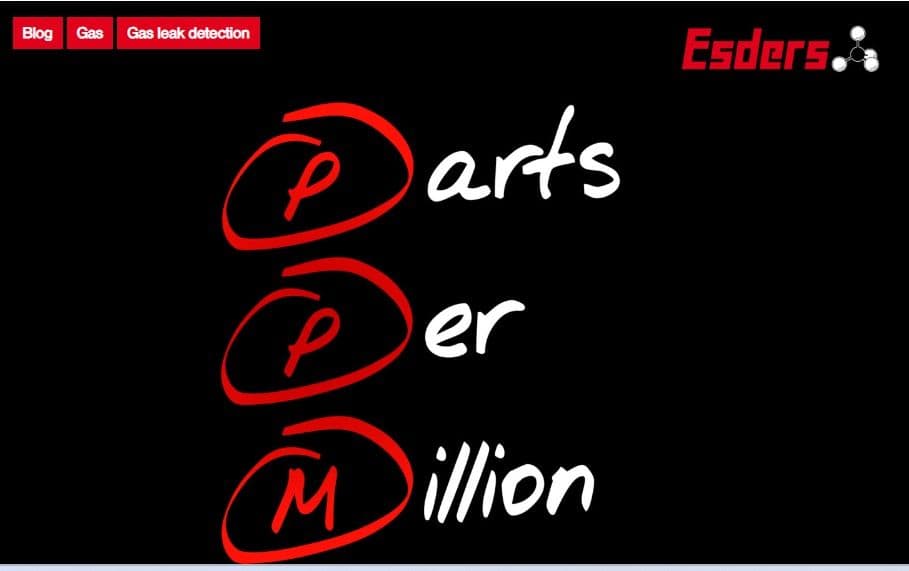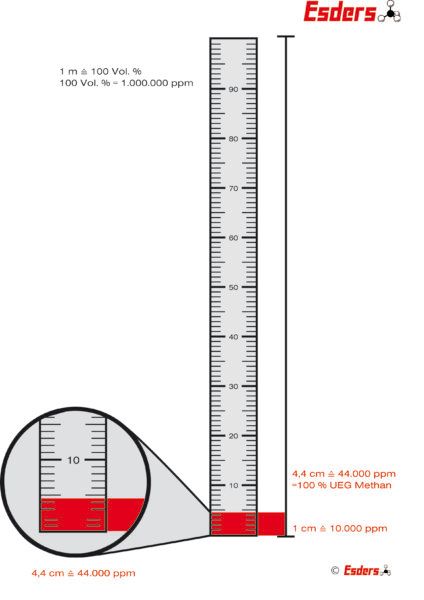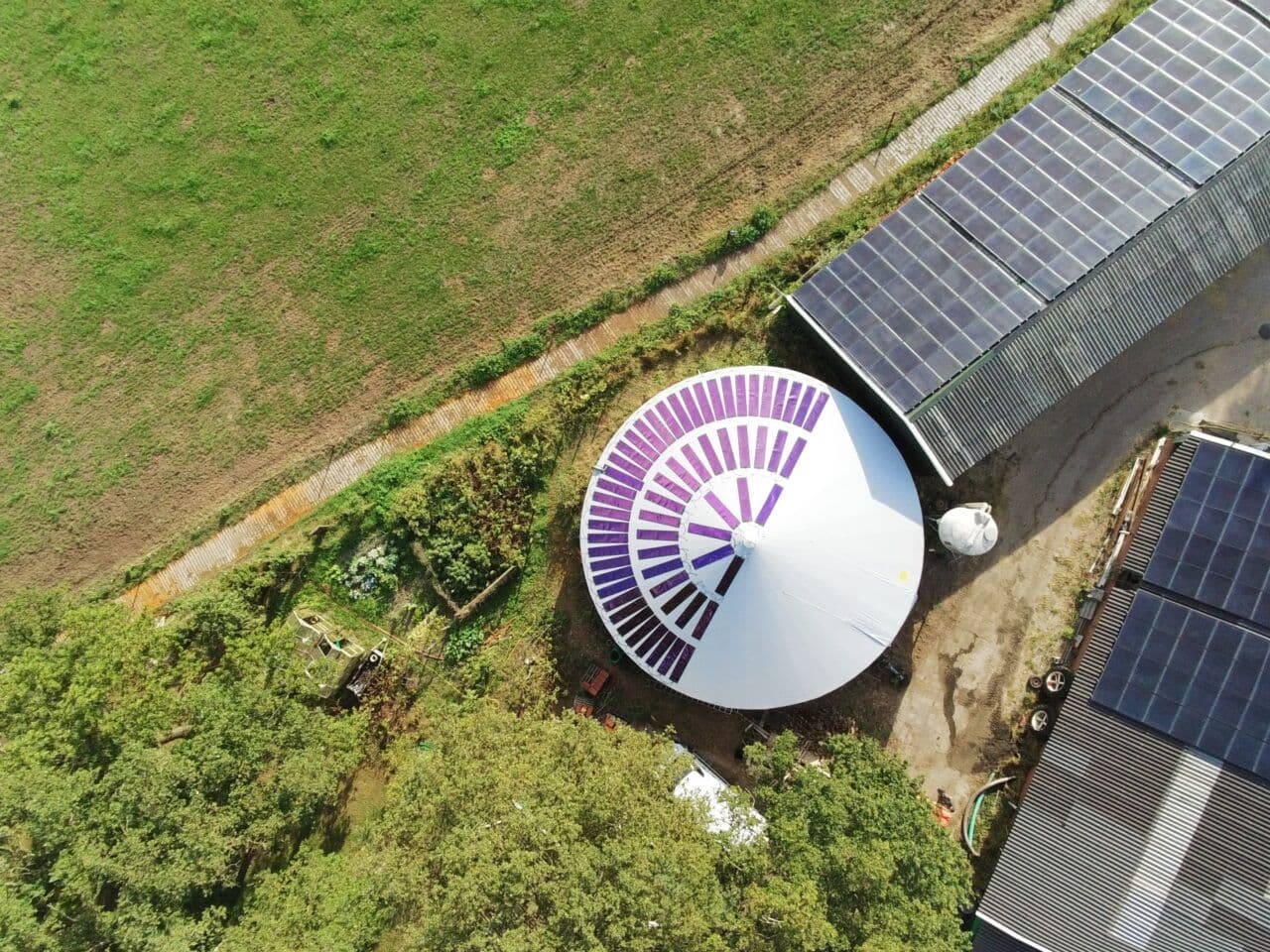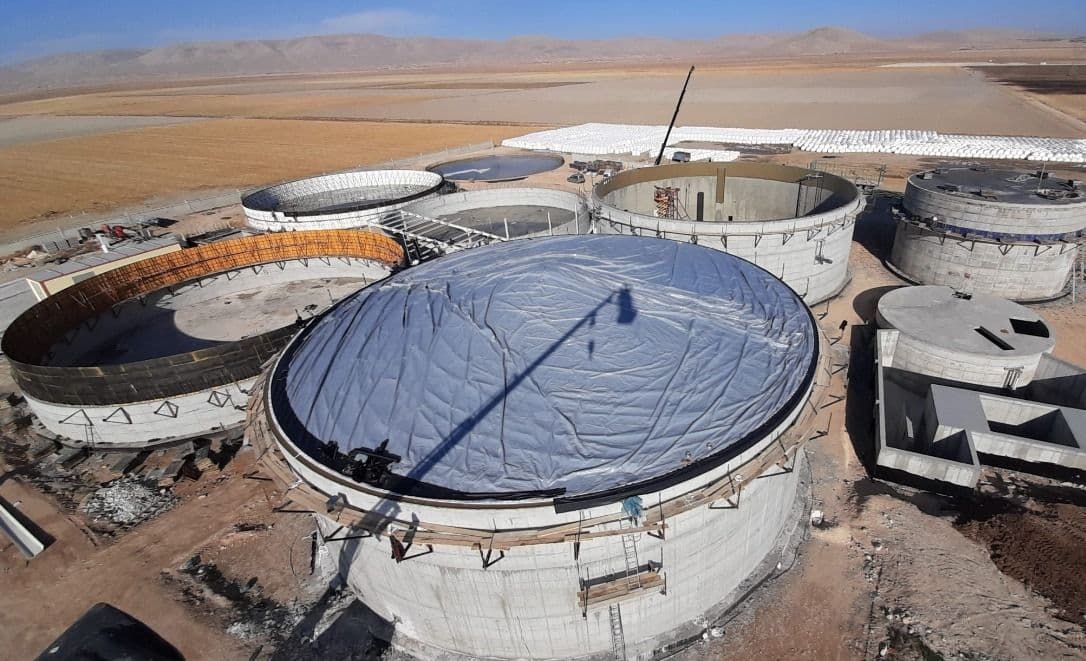
LEL versus PPM
The basics of measuring range
The abbreviation LEL stands for Lower Explosion Limit and it corresponds to the concentration of a substance in the air above which there is a risk of explosion. The LEL of flammable gases such as methane, ethane, propane and butane is relevant for us. In this article we will limit ourselves to the LEL of methane. Methane is measured in % LEL or % by volume (vol.-%). Methane is also measured in ppm (parts per million). The LEL monitoring serves the safety of individuals, because it can be stated that 100% LEL corresponds to 100% risk of explosion. When working in an area above the LEL, an ignition source in combination with oxygen can cause an explosion. In Europe, we have set the LEL of methane at 4.4 vol.-%. Below this limit, ignition is not possible because the mixture of air and methane is too lean. However, since measurements are only monitored at specific points, it is necessary to work at high safety levels. For example, if we measure in front of the body, the concentration in the room could increase significantly towards the ceiling. Another reason for low alarm levels is that natural gas is always a gas mixture and contains other components besides methane. For example, propane and butane are often found in addition to ethane. Since these gases are explosive even at lower concentrations, the LEL of natural gas is usually slightly below 4.4 vol.-%. For this reason, the alarm levels in Germany are set at 20% LEL or often already at 10% LEL for the first alarm.
Comparison measuring range LEL (= UEG) versus PPM

When do we measure in LEL or % by volume or better in ppm range? What is the difference?
With % by volume we speak of one part per hundred and with ppm we speak of one part per million. The measuring range in which we operate at ppm is therefore considerably smaller than the measuring range for a measurement in % LEL or vol.-%. Smallest amounts of a gas like methane can be detected and displayed in the ppm range with a highly sensitive sensor (1 vol.-% = 10.000 ppm). Since it is difficult to estimate values with many decimal places, e.g. 0.04 vol.- % or 0.008 vol.- %, the ppm measuring range is used for this purpose. In this case 0.04 vol.-% would then be 400 ppm. To illustrate the measuring range we use a folding rule.



